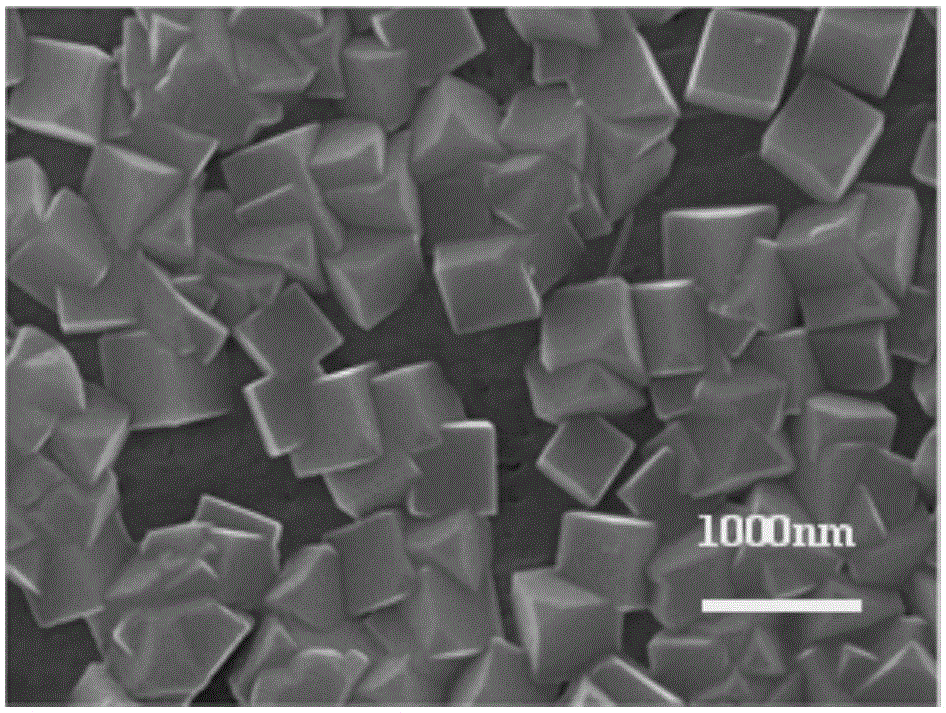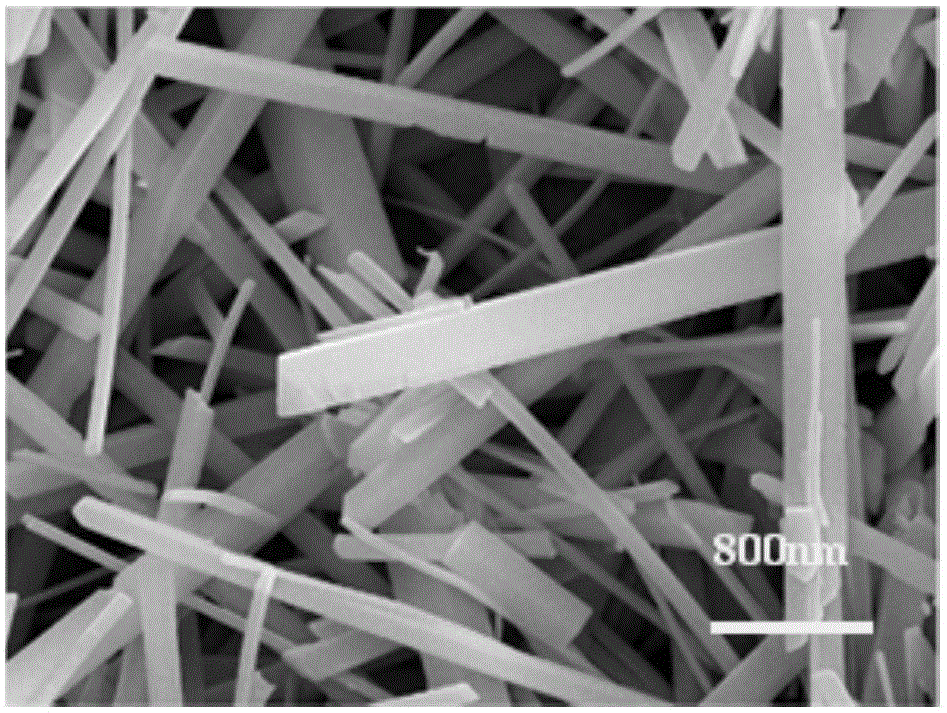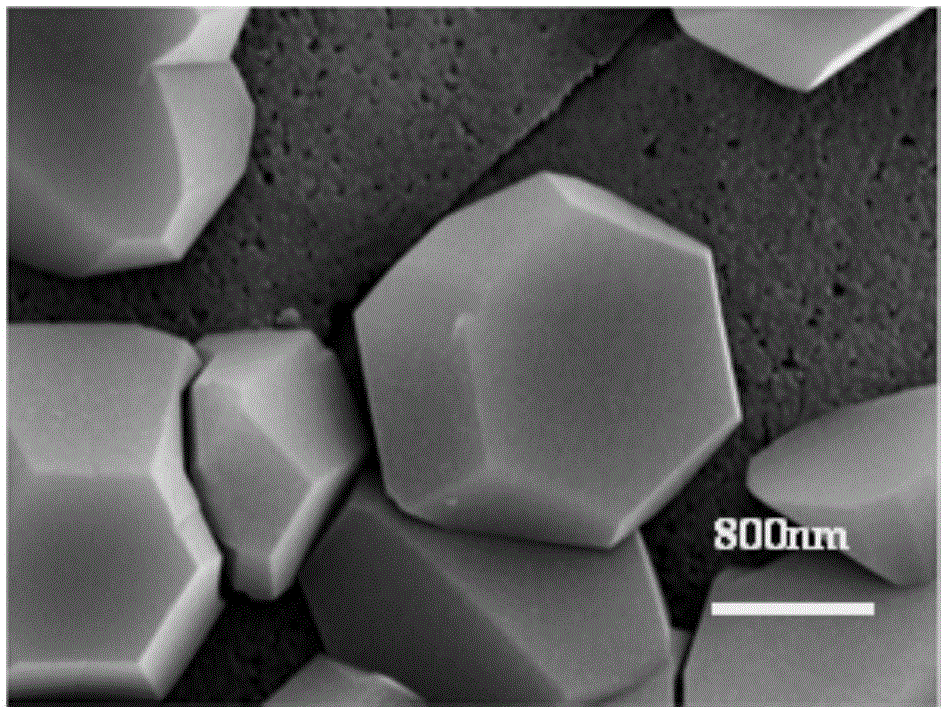A method for growing α-fe2o3 nanometer arrays in situ on steel surface
An in-situ growth, nano-array technology, applied in the fields of nanotechnology, nanotechnology, nanotechnology, etc. for materials and surface science, can solve the problems of poor binding force, complex operation process, single morphology, etc., and achieve easy recycling. , The process is simple, the effect of various shapes
- Summary
- Abstract
- Description
- Claims
- Application Information
AI Technical Summary
Problems solved by technology
Method used
Image
Examples
specific Embodiment approach 1
[0021] Specific implementation mode 1: This implementation mode is an in-situ growth of α-Fe on the surface of steel 2 o 3 The method of the nanometer array is specifically completed according to the following steps:
[0022] 1. Pretreatment: First, polish the rectangular iron sheet, then use absolute ethanol as the cleaning agent to perform ultrasonic cleaning for 10s to 60s, then rinse with deionized water, and get the processed rectangular iron sheet after natural drying;
[0023] 2. Hydrothermal synthesis reaction: immerse the treated rectangular iron sheet in a reaction kettle filled with alkaline solution, then seal it, and then transfer it to a blast drying oven, and perform a hydrothermal synthesis reaction at a temperature of 120-180°C for 6h-24h , take out the post-reaction iron sheet;
[0024] 3. Low-temperature heat treatment: Clean the reacted iron sheet with anhydrous ethanol or deionized water as a cleaning agent, dry it and put it in a muffle furnace, and rai...
specific Embodiment approach 2
[0025] Embodiment 2: The difference between this embodiment and Embodiment 1 is that the polishing treatment in Step 1 is sandpaper grinding, hydrochloric acid system polishing, hydrogen peroxide system chemical polishing, nitric acid system chemical polishing or electrochemical polishing. Others are the same as the first embodiment.
specific Embodiment approach 3
[0026] Specific embodiment three: the difference between this embodiment and specific embodiment two is: the specific operation of described sandpaper grinding is as follows: use 800# sandpaper, 1500# sandpaper and 2000# sandpaper to carry out step-by-step polishing on the rectangular iron sheet, which is completed Sandpaper polished finish. Others are the same as in the second embodiment.
PUM
| Property | Measurement | Unit |
|---|---|---|
| thickness | aaaaa | aaaaa |
| particle diameter | aaaaa | aaaaa |
| diameter | aaaaa | aaaaa |
Abstract
Description
Claims
Application Information
 Login to View More
Login to View More - R&D
- Intellectual Property
- Life Sciences
- Materials
- Tech Scout
- Unparalleled Data Quality
- Higher Quality Content
- 60% Fewer Hallucinations
Browse by: Latest US Patents, China's latest patents, Technical Efficacy Thesaurus, Application Domain, Technology Topic, Popular Technical Reports.
© 2025 PatSnap. All rights reserved.Legal|Privacy policy|Modern Slavery Act Transparency Statement|Sitemap|About US| Contact US: help@patsnap.com



